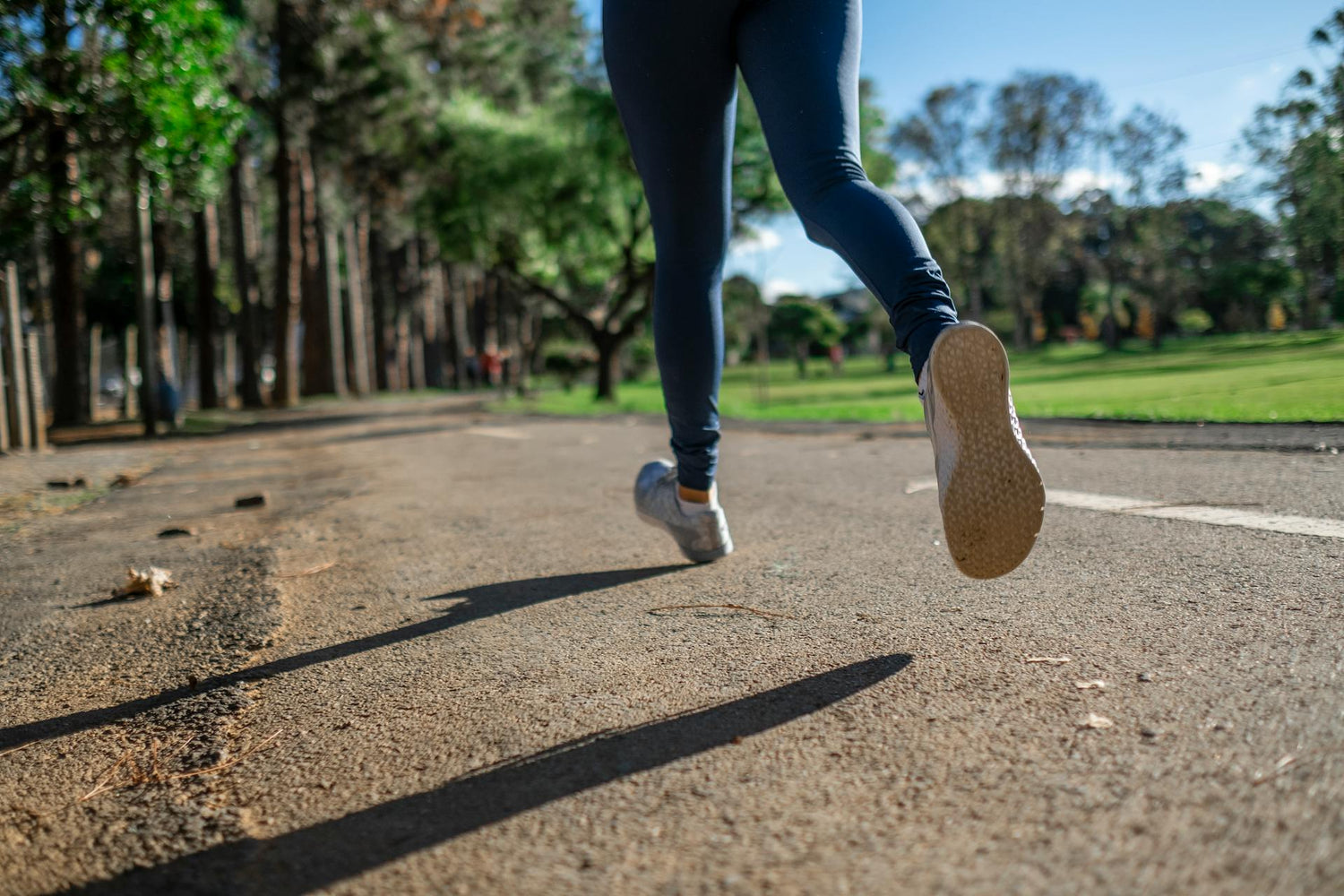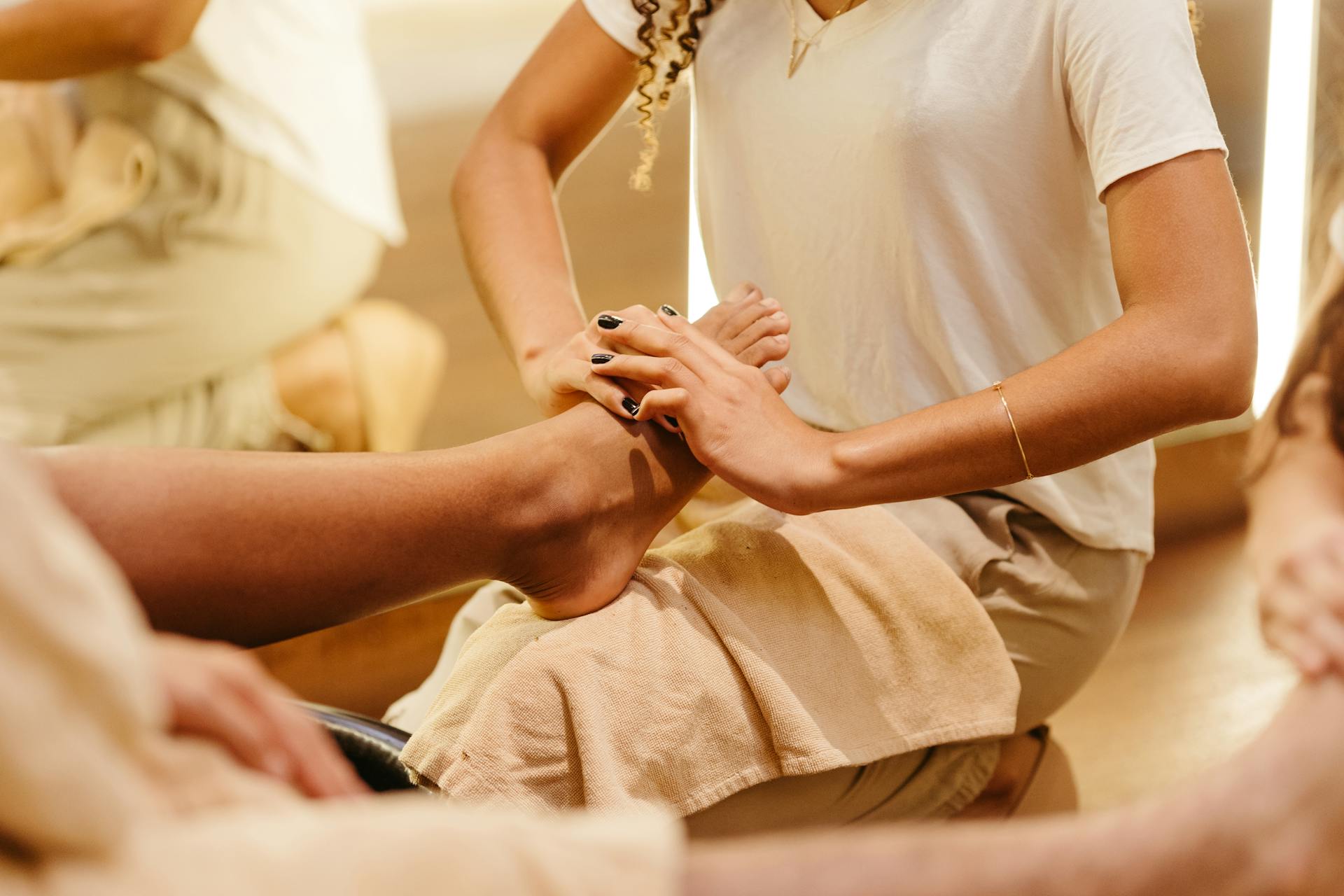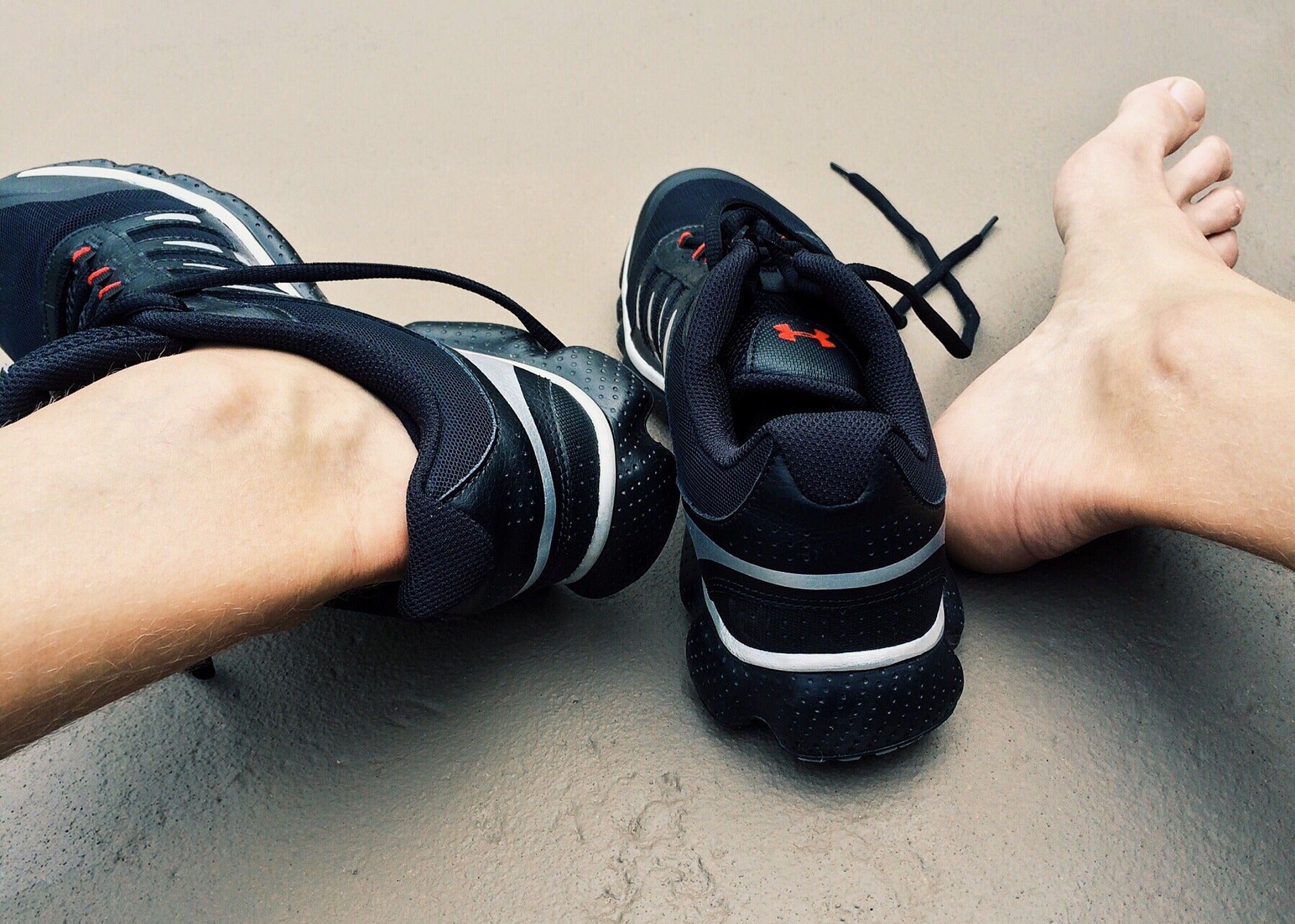If you’re someone who’s always on your feet, you’re almost sure to encounter ball-of-foot pain at some point. It’s called metatarsalgia, and it impacts up to 10% of everyday people — with that number jumping to 50-95% for older adults.
Metatarsalgia is nonspecific, meaning it doesn’t have a single cause. But if you’ve noticed pain in the ball of your foot lately, you might wonder whether TLC in the form of foot massage could help.
Here’s what you need to know about massage for metatarsalgia, including the potential benefits, techniques, and tips to keep in mind.
What Causes Metatarsalgia?
Metatarsalgia refers to pain or inflammation in the metatarsals — the long, slender bones that act as the support beams for the middle of your feet.
This condition doesn’t have a sole cause. Instead, there are many actions and risk factors that can increase your odds of experiencing it.
For example, if you’re a sprinter or runner, too many repetitive bursts of shock can strain the metatarsals and eventually cause pain. But it can also occur due to certain health conditions.
With that in mind, here are some of the most common causes of metatarsalgia:
- Jumping, running, or otherwise putting repetitive shock on the ball of your foot
- Specific foot shapes. If you have a high arch, the ball of your foot might absorb extra shock every time you step down. The same is true if you have a middle toe that’s longer than your big toe.
- Being overweight, as this can put more strain on the slender foot bones
- Footwear that doesn’t suit your foot shape. For example, high heels and shoes with a narrow head can both put lateral stress on your metatarsals.
- Stress fractures, which can happen with excessive, repetitive force or trauma
- Morton’s neuroma, which is caused by inflammation in the nerves near your metatarsals
Talking To Your Doctor
Ball-of-foot pain is fairly common, and it doesn’t always require a trip to your doctor. That being said, it’s essential to speak with a healthcare professional if your pain is sharp, burning, or lasts more than a few days.
Metatarsalgia Treatments
If you’re like many people, switching to gentler activities, resting the feet, and using better footwear can help reduce your pain. But if your metatarsalgia is more serious or persistent, your podiatrist or doctor may suggest treatments like:
- Orthotic inserts
- Physical therapy
- Tests and lab work to check for conditions like gout, bursitis, or arthritis
- Surgery to correct any bone alignment issues
- A cast to treat any fractures
What Are the Benefits of Foot Massage for Metatarsalgia?

When you have overuse-related metatarsal pain, a massage can be a great way to ease soreness and boost your overall foot health.
Of course, it’s always a good idea to check with a doctor before getting started. But with the proper techniques, a gentle foot massage may help:
Soothe Soreness and Pain
Kneading, pressure, and rubbing can stimulate the pressure receptors in your muscle tissue. As a result, it could help ease certain types of pain — including when you have sore, painful feet.
According to the American Massage Therapy Association, a combination of massage and stretching may help ease pain from plantar fasciitis.
And in a 2016 review of over 60 studies, researchers found that massage was helpful compared to no treatment for easing pain and boosting health-related quality of life.
Support Blood Flow
The warmth and friction of a proper foot massage may help promote blood flow — if even for a short while — to the soft tissue in the ball of your foot.
In a small 2019 study, self-Thai foot massage — a type of active massage involving stretching — led to an increase in skin blood flow and range of motion.
How does it work? It may partly be due to the heat generated from massage, which can help encourage the blood vessels in your feet to dilate (or widen.) Plus, massage could support the natural flow of oxygen-rich blood by manually encouraging its movement.
Promote Relaxation, Endorphins, and Stress Relief
When it comes to pain relief, the impact of relaxation can often be overlooked. But the truth is, research shows that stress can lead to a difference in the way we experience pain — in some cases, exacerbate it.
Luckily, massage for metatarsalgia isn’t just good for soothing soreness. It can also be a helpful tool for curbing stress.
The right techniques can help you activate the parasympathetic nervous system and switch into “rest-and-digest” mode. As a result, even a 5-minute foot massage could be enough to help you center yourself in the present moment, shift away from stress, and reap the physical benefits of relaxation.
3 Hands-On Foot Massage Techniques To Try at Home

Here are three easy ways to try massage for metatarsalgia, plus a few home tools to use for a more relaxing experience:
1. Simple Arch Massage
A gentle massage to the arch of your foot can help you relieve tension, strain, and stress around the metatarsals. Here’s how to try it:
- Find a comfortable seat, and rest your foot on top of your opposite knee.
- Hold your foot with both hands.
- Place your thumbs on the lower section of your foot’s arch, and wrap the rest of your fingers around the top of your foot.
- Start with light pressure, and use your thumbs to massage in outward gliding motions.
- After 30–60 seconds, increase the pressure until it reaches a level that feels good to you.
- Continue to massage in diagonal outward motions from the center of the foot. Make your way up toward the ball of the foot, and then back down toward the heel.
- Optionally, spend a minute gently splaying (or spreading) the ball of your foot using your thumbs.
- Repeat for a total of 5–10 minutes.
2. Three-Finger Technique
When it comes to massage for metatarsalgia, the three-finger technique is another easy method to try.
For this technique, you’ll want to get into the same position as you would with the arch massage — with your foot crossed over your knee. This way, you can easily reach the foot muscles.
From there:
- Curl in your thumb and pinky, and straighten your index, ring, and middle fingers.
- Place your fingertips just above the heel.
- With moderate pressure, glide up the length of the foot. Repeat for 2–3 minutes.
- Optionally, finish the technique by using your knuckles to massage the heel with moderate pressure.
- Repeat these steps for a total of 3–5 minutes.
3. Calf Glides
The calf is an often overlooked area when it comes to foot massage. But by working out tension in the lower legs, you can promote the healthy function and alignment of the feet and ankles.
Here’s a simple calf gliding massage that works well on its own or paired with a full foot massage:
- Apply a drop of lotion or oil to the calf muscle.
- Wrap one hand around the calf muscle, near the ankle. Your purlicue (the little spot between your thumb and index finger) should rest on the shin.
- Apply moderate pressure with your fingers and thumb, so that you’re lightly pressing down on either side of the calf. Glide in an upward motion, and stop at the knee.
- As you finish the first glide, use your other hand to glide up the back of the calf in the same motion.
- Alternate hands to massage the calf for a total of 5–10 minutes.
What About Foot Massage Tools?

Not everyone finds it relaxing — or easy — to massage their own calves and feet. Luckily, home massage tools can be a great alternative when you want a more hands-off massage experience.
If you’re planning on trying massage for metatarsalgia, here are a few tools to keep in mind:
Foam Rollers
Foam rollers are cylindrical tools that use a sustained, rolling type of massage called self-myofascial release (SMR). SMR is a powerful way to break up tension in the muscles and fascia, which is the connective tissue found all throughout your body.
While foam rollers aren’t always good for foot massage directly, they can be excellent for rolling out tension in the calves, hamstrings, and quads.
Massage Balls
Like foam rollers, massage balls also use myofascial release to roll out the muscles and break up trigger points.
They’re great for focusing specifically on the feet, since they’re easier to use on smaller, more delicate muscles.
On top of that, they’re also very convenient. You could use a massage ball (or tennis ball) to roll out your feet while you’re relaxing, catching up on your favorite show, or working at your desk.
Electric Foot Massagers
If you’re looking for a step up from manual rolling tools, you may have wondered about electric foot massagers. These tools are ideal for a hands-off massage session, and there are many different kinds out there to choose from.
For example, the MedMassager Foot Massager Plus provides deep, therapeutic relief using circular, oscillating motions to soothe the bottoms of the feet. But other tools might use Shiatsu massage or simple vibration.
In any case, you’ll want a device with multiple pressure options, so that you can tailor the massage to suit your needs. And if you use one, you’ll want to remember to:
- Start at the lightest setting to “warm up” your muscles for a minute or two before increasing the pressure.
- Make sure to read the manual’s directions, as every foot massager works a bit differently.
Massage for Metatarsalgia: 5 Safety Tips To Keep in Mind
Mild ball-of-foot pain usually isn’t serious, and when it strikes, massage can be a great way to give yourself some TLC.
But sometimes, metatarsalgia can come with some intense inflammation. And in other cases, it might even be related to another underlying condition.
To ensure you stay safe, remember to:
- Ask your doctor ahead of time if your foot pain is persistent, sharp, or burning.
- Avoid directly massaging your feet if they are noticeably inflamed, recently injured, or very painful. Acute, inflamed injuries can be worsened by pressure.
- Start with a gentle massage and increase the pressure gradually. This can help you work up to the level of massage that’s right for you, rather than starting with deep pressure and potentially harming your foot.
- Focus on soft tissue, and avoid massaging areas that are extremely bony.
- Be mindful of your comfort, and watch out for any techniques that are downright painful.
Ask About Conditions That May Interact With Massage
When it comes to safety, it’s important to note that massage for metatarsalgia can sometimes interact with other health conditions.
Having certain conditions doesn’t always mean you can’t get a foot massage — but it might mean you need to be more careful about trying it.
With that in mind, be sure to check with your doctor if you have conditions like these (or anything you’re unsure about):
- A history of blood clots
- Kidney or liver issues
- Cardiovascular conditions
- Skin conditions, open wounds, or bruising
- Acute injuries, such as a stress fracture or tear
- Infections
- Bone conditions such as osteoporosis
- Other conditions like diabetes, gout, neuropathy, or arthritis
Is It Worth Getting Professional Massage for Metatarsalgia?
Depending on your lifestyle, yes. Professional massage can be a good investment if you’re someone who stands all day at work, runs marathons, or practices sports that involve lots of running, jumping, and leaping.
It can also be helpful for seniors and older adults looking to combat chronic soreness and achiness.
At any rate, a professional massage therapist can use personalized techniques to bring you benefits like:
- Better range of motion and flexibility
- Reduced stiffness and pain
- Reduced post-exercise soreness
- Improved overall health and function of the feet and legs
Other Remedies for Ball-of-Foot Pain
Aside from massage for metatarsalgia, here are some other measures you can take to reduce pain and keep your feet — and metatarsals — in good health:
Rest, Ice, Compress, and Elevate
If your metatarsal pain is due to a fresh or inflamed injury, the RICE method may be helpful in the first few days of the healing process. It involves:
- Resting and cutting back on movement to give your body a chance to kickstart recovery
- Icing to keep inflammation down in the initial day or two after injury
- Compression and elevation to help minimize swelling
Step Back From High-Impact Activities
If overuse is the culprit behind your metatarsalgia, adjusting your daily routine can have a big impact on your recovery. You can:
- Avoid walking or standing for long periods.
- Stick to low-impact activities for a while. For example, you could take a break from running in lieu of doing some yoga or swimming instead.
Aim for Metatarsal-Friendly Footwear
Wearing the wrong types of footwear can wreak serious havoc on your delicate metatarsal bones. And if your pain comes after being in your shoes all day, it could be worth taking a critical look at how they may be affecting your feet.
High heels or flats with extremely narrow tips could be “squishing” the bones together and causing pain. Additionally, athletic shoes with awkward (or no) support could lead to unnecessary shock on your feet while you run, walk, or work out.
Besides switching to more supportive shoes, there are also extra types of foot support you can look into, such as:
- Metatarsal pads, which add extra cushioning to your metatarsal joints
- Arch support pads, which can support the natural pronation of your feet
- Toe spacers to keep your feet in healthy alignment, take pressure off your nerves, and minimize compression around the joints
Stick to a Healthy Weight
Another step you can take to ease (and prevent) metatarsal pain is to keep your weight within a healthy range.
Why is it important? Experts estimate that one extra pound on the body can cause up to eight additional pounds of pressure on the hips, knees, ankles, and feet. By avoiding excess pounds, you can minimize the stress and shock on your metatarsal bones.
The Takeaway on Massage for Metatarsalgia
No matter your age or lifestyle, you’re certainly not alone if you’ve been dealing with ball-of-foot pain. The good news is that along with adjusting your daily activities, massage for metatarsalgia is another simple, natural way to find relief.
A gentle foot massage could soothe sore muscles, release tension, and induce relaxation — and in turn, it could make a big difference in sore, achy feet.
It’s always important to talk to your doctor about adding massage to your routine, especially if you’re dealing with any current health conditions. With their green light, you can opt for a hands-on arch rub, a simple calf massage, or a therapeutic massager in the comfort of your home.
Get Started
Start finding relief with the MedMassager Foot Massager Plus today, or learn more about its many restorative uses here.



